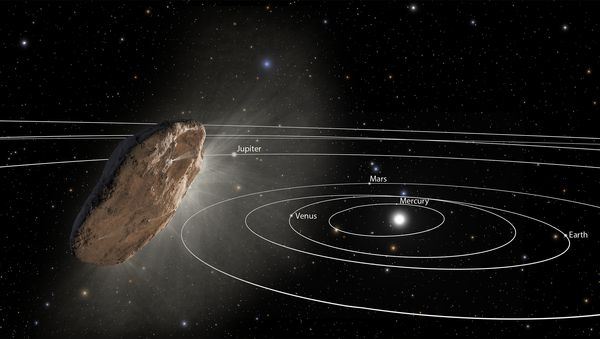A new object venturing into our Solar System from the depths of outer space has been spotted by an amateur astronomer in Crimea, Gennady Borisov, and has now officially been named C/2019 Q4 Borisov by the Minor Planet Centre. It's the second time in recent years that such an object has entered our planetary neighbourhood, with the last one being Oumuamua – a cigar-shaped object that at some point even triggered speculations about it being an alien spaceship using "light-sails".
Here's a remarkable animation of #gb00234, which may be our second known interstellar visitor, taken by astronomer Gennady Borisov - who discovered the object.
— Jonathan O’Callaghan (@Astro_Jonny) September 11, 2019
2l/Borisov, perhaps?
(source: https://t.co/vkYXrK6KBC) pic.twitter.com/WObsGj3HJH
However, while Oumuamua was only noticed as it was leaving our Solar System, C/2019 Q4 Borisov was spotted shortly after entering and won’t reach its closest point in relation to the Earth until December this year. It currently poses no danger to our planet, but the fact that it was noticed so early will give astronomers more time and opportunity to study it.
For being something that occurs so rarely, the appearance of a second interstellar object in such a short span of time was a pleasant surprise for astronomers, who can hardly study Oumuamua anymore.
Whoever came up with this is a genius. #gb00234 pic.twitter.com/QB8v6mcSTh
— David Blanchflower BSc (@DavidBflower) September 12, 2019
The interstellar nature of C/2019 Q4 Borisov was initially questioned, however calculations later indicated that it would pass through the solar system on a parabolic trajectory, meaning that it is not affected by the Sun's gravity and thus must have come from outside of the Solar System.
Oumuamua made headlines in 2017 as the first detected interstellar object in our Solar System, although some scientists insist that it was definitely not the first to have ever travelled through our planet’s neighbourhood. The unusual trajectory of the object even led some scientists to believe it was a controlled alien ship or probe, using so-called "light-sails" technology. The latter theoretically allows covering almost indefinite distances by using solar radiation as a propellant, just like the wind propels a boat with a regular sail.




